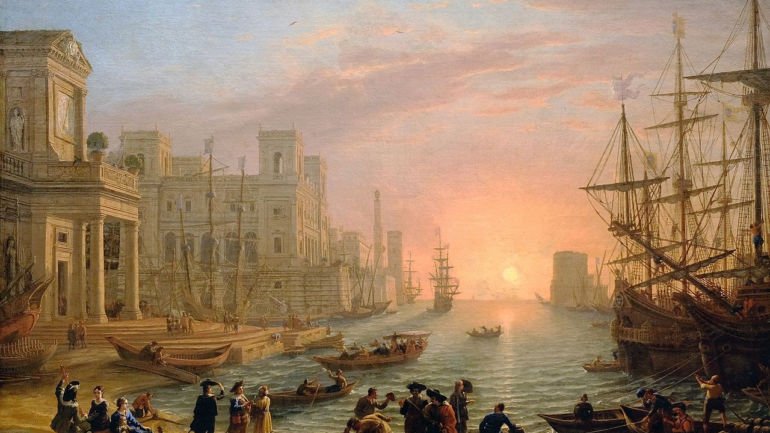Generally, people believe that after the end of ancient Greece, the next period was ancient Rome. However, there is actually a very important period in between known as the Hellenistic period.
Art of the Hellenistic Period
- In 336 BC, Alexander the Great conquered Athens, establishing the Kingdom of Macedonia, which unified ancient Greece until its destruction by ancient Rome in 146 BC. This 200-year span is known as the Hellenistic period.
- The Kingdom of Macedonia was a monarchy, but it still adhered to the cultural traditions of ancient Greece. Alexander the Great’s teacher was the famous philosopher Aristotle, which shows that the art and scholarship of the Hellenistic period were closely linked to those of ancient Greece, making it worthy of exploration.
- The Hellenistic period involved a comprehensive deepening of the cultural and artistic traditions of ancient Greece, significantly influencing the development of art in later generations. For example, sculpture during this period became more vivid and expressive than that of ancient Greece, with the two most representative works being the “Venus de Milo” and the “Laocoön.”
- The “Venus de Milo,” which we are very familiar with today as the “Aphrodite of Milos,” is one of the three “treasures” of the Louvre, alongside the “Mona Lisa” and the “Winged Victory of Samothrace.” It is believed that the statue originally had arms, and since its discovery, many sculptors have studied how to restore the arms. However, no design has proved satisfactory; the version of Venus without arms appears the most harmonious and balanced.
- The sculpture “Laocoön” better represents the artistic style of the Hellenistic period. It was unearthed over three hundred years earlier than the “Venus de Milo,” in 1506 in Rome. Michelangelo, one of the “Big Three” of the Renaissance, was very fond of this statue, and it influenced him to create similar works, such as “The Dying Slave.”
- The sculpture “Laocoön” tells the story from the Trojan War. Ancient Greece struggled to capture Troy and ultimately used the ruse of the wooden horse to breach its walls. Laocoön was a priest of Troy who warned against bringing the horse inside. However, his warning angered the goddess Athena, who sent two serpents to strangle Laocoön and his two sons. This statue depicts the moment when the three are being killed by the snakes.
- In “Laocoön,” the figures exhibit intense action, with their bodies in a state of agony, tension, and struggle. The expression captures their emotional turmoil very effectively, showcasing an extremely high level of realism that subsequent artists have found hard to surpass.
- Most paintings from ancient Greece and the Hellenistic period have not survived due to the technical limitations of the time, which made pigments fade easily, and numerous wars that led to the destruction of artworks. The only relatively well-preserved and notable piece is “Hades Abducting Persephone.”
- The painting “Hades Abducting Persephone” has almost completely faded in color, but its composition, lines, and details reveal an exceptionally high level of realism, especially in the treatment of the folds of clothing, which is very precise.
- Although few artworks from the Hellenistic period survive, its artistic standards can be understood through literary records. For example, there are stories of a painter whose work was so lifelike that birds flew down to peck at the grapes he painted, and he ultimately died laughing at the comically depicted old woman he had painted. While the story may be exaggerated, it aptly describes the vividness of painting at that time.
- The basic elements of classical architectural art in Europe over the past two thousand years were established during ancient Greece and the Hellenistic period. These elements primarily include two types: columns and entablatures, with the most representative structure being the Parthenon in Athens, Greece.
- Simply put, the Parthenon is a rectangular space surrounded by a circle of columns, with a triangular pediment above the entrance. This architectural style represents the fundamental characteristics of Hellenistic architecture and laid the foundation for classical architecture in Europe. Additionally, the three styles of columns, from simple to elaborate, reflect the architectural style of that time.
- Among the three column styles, the Doric order is the simplest and earliest, consisting of a single column topped with square capitals, which are primarily functional with little ornamentation. The Ionic order builds upon the Doric, adding volutes to the column heads, while the Corinthian order, derived from the Ionic, incorporates leaves, making it more complex.

The sculpture “Venus de Milo,” also known as “Aphrodite of Milos,” is currently housed in the Louvre Museum in Paris, France.

The sculpture “Laocoön and His Sons” is currently housed in the Vatican Museums.

Michelangelo – the sculpture “Dying Slave” is currently housed in the Louvre Museum in Paris, France.

Hades Abducting Persephone

Roman Column – Doric Style

Roman Column – Ionic Style

Roman Column – Corinthian Style

The Colosseum, the largest circular amphitheater of ancient Rome, is located in the center of Rome.
Distinguishing Authentic European Style
If you’re at a friend’s house or decorating your own, and the designer presents you with a European-style design plan, you should pay attention. If you see columns that do not belong to any of the three classical styles, then be cautious; the so-called European style from this designer may not be very authentic.


